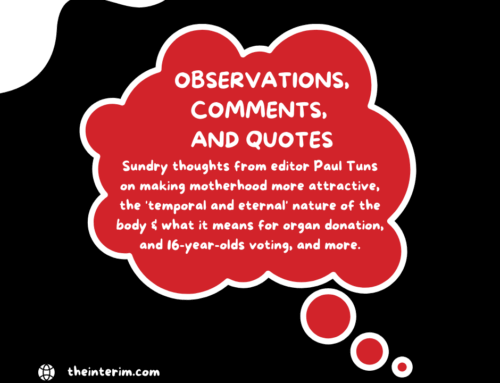
Lawyer Hugh Scher of the Euthanasia Prevention Coalition argued that no safeguards will protect vulnerable people from being killed.
In 1993 the Supreme Court upheld the Criminal Code provision against assisted suicide in a 5-4 vote as it refused Sue Rodriguez’s request to have medical assistance to be killed. Now, 21 years later, the Supreme Court of Canada is revisiting the issue of physician-assisted suicide.
In 2011, Gloria Taylor, who had Lou Gehrig’s disease (ALS) and died in 2012, and the family of Kay Carter, who had committed suicide with medical assistance in Switzerland, along with the B.C. Civil Liberties Association, challenged Section 241 of the Criminal Code, which states it is an offence to counsel or to aid suicide. They argued that it violated Sections 7 and 14 of the Charter of Rights and Freedoms because the law “discriminates” against individuals with degenerative diseases who might not be able to end their own lives or lead them to kill themselves before they lose the capacity to do so but before they would prefer to commit suicide.
Justice Lynn Smith of the B.C. Supreme Court agreed with the appellants that the prohibition on assisted suicide was discriminatory. The following year, the B.C. Court of Appeals overturned Smith’s decision, setting up a legal battle for the country’s highest court.
The federal government argues that only a total ban on assisted suicide protects vulnerable Canadians. Just before the Court heard the case, Prime Minister Stephen Harper said the issue is moot because Parliament voted against a private member’s bill that would have legalized euthanasia.
The Euthanasia Prevention Coalition was an intervenor in the case, as it has been since Taylor launched her suit in 2011. The EPC makes five arguments against assisted suicide: laws against euthanasia and assisted suicide “are protective and not discriminatory;” safeguards do not protect against abuses of the right to kill; the issue should be decided by Parliament and not the courts; there is no constitutional “right to die;” it “diminishes autonomy by empowering doctors to end the lives of patients at the most vulnerable time of their lives.”
EPC executive director Alex Schadenberg told CTV, “the question is: in society, should you ever give somebody else the right to cause your death and then what happens if you do?”
EPC legal counsel Hugh Scher told the CBC that, “the absolute ban against assisted suicide and euthanasia remains the norm in most of the world, with the exception of seven jurisdictions.”
The Council of Canadians with Disabilities and the Canadian Association for Community Living were also intervenors. The CCD represents seven disability groups in public advocacy, while the CACL lobbies for many provincial associations of parents with disabled adult children.
“Too many people look at our members and think their lives aren’t worth living,” said the CCD’s national co-ordinator, Laurie Beachell. “Some of the people who think like that work in the health bureaucracies,” he added, “where they deny our members transplants or issue do-not-resuscitate orders without our members’ consent. Our members are already at risk and this law would put them more at risk.”
The CCD and CACL say that more community supports are necessary to help people with disabilities so that individuals do not feel that dying is the only answer to their travails.
Schadenberg told The Interim the health care system needs to improve end-of-life care. He said public support for assisted suicide would decrease if concerns about pain and fear of dying were properly addressed.
Schadenberg also notes that while the euthanasia and assisted suicide lobby frames their arguments in terms of terminal illness, the tendency in places that have legalized the practice such as the Netherlands, Belgium, and Oregon, is to expand the criteria to include disabilities and even mental illness.
The Supreme Court of Canada is expected to release its decision in 2015.




